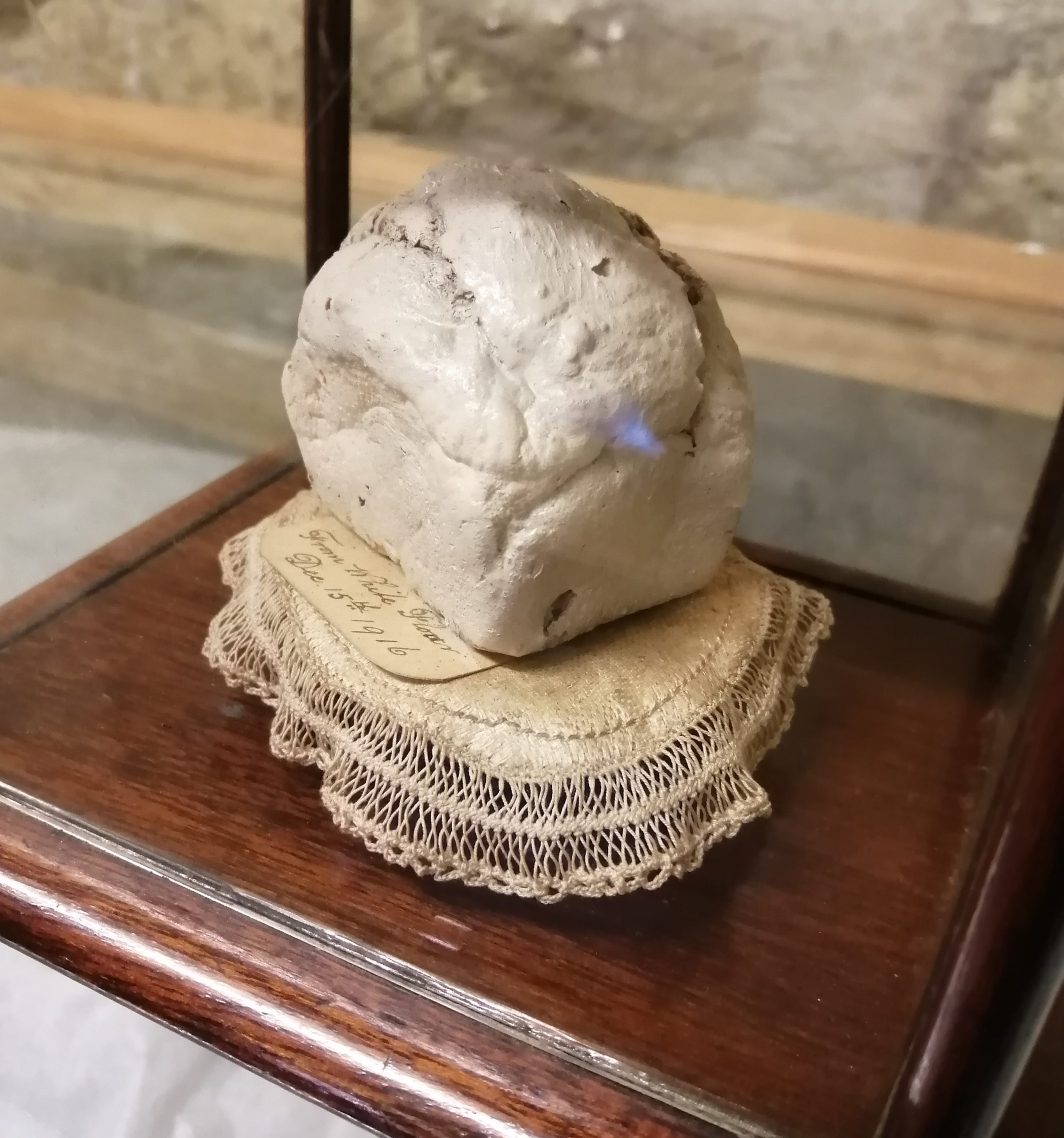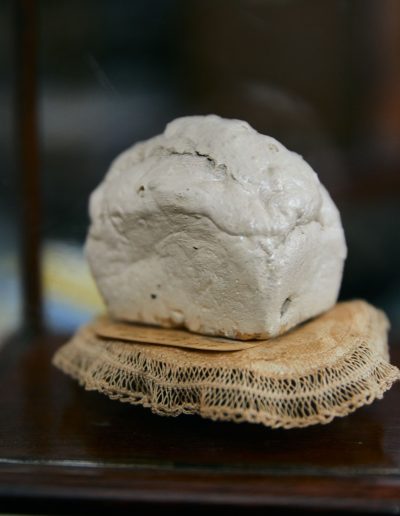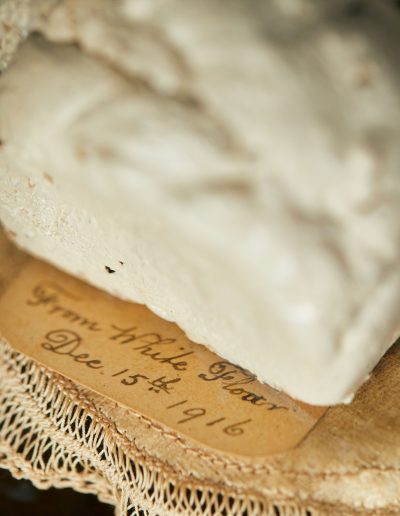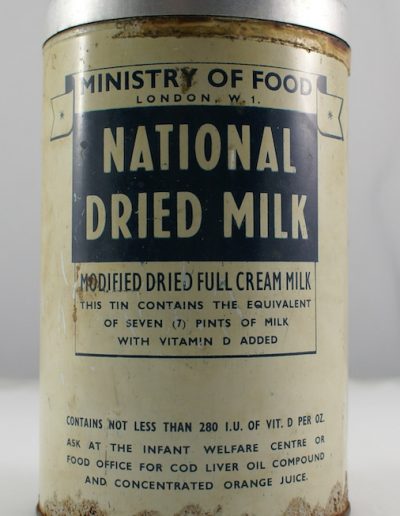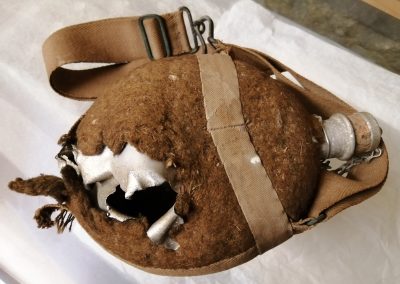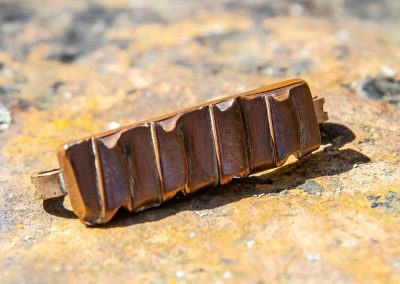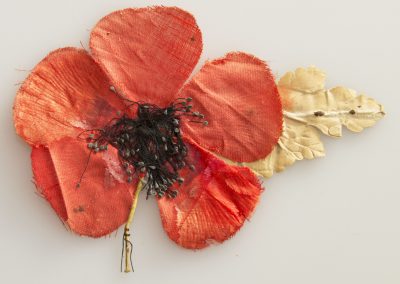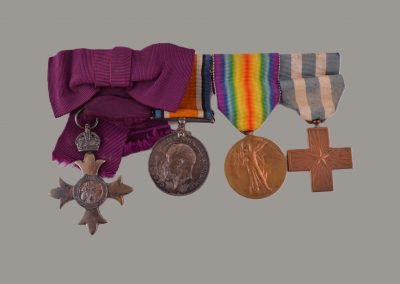The Last Loaf of White Bread
Beck Isle Museum
It is not known who made this very curious object or put it in its own glass cabinet, but the person who donated it to the Beck Isle Museum in North Yorkshire believed it to be important. They told the family story that it was made with the last white flour in the country in 1916.
In November 1916, a government Food Department was set up and the shortage of bread was viewed as a significant problem. Food shortages were increased because of a deliberate campaign by Germany, who from January 1917, used submarines to target supply ships heading to the country.
People in England tended to prefer white bread, which required more flour than wholemeal. People were encouraged to make bread by mixing flour with other things including pre-cooked rice, potatoes, or barley. In May 1917, the Ministry of Food introduced the Bread Order. This banned the sale of newly-baked bread. Only bread that was 12 hours old could be sold in order to make it less appetising and easier to cut thinly. It also meant that the female bakers (now doing jobs traditionally done by men) did not need to do night shifts, leaving behind their children, and fuel was saved by not needing night-time lighting.
Watch the Video – to explore this object with your group
Watch The Video With Subtitles
Talking Points
What questions do you have about this object?
Do you think the story could be true that this was really the last loaf of white bread in the country?
Why do you think it has been put in a glass case of its own?
Why do you think this loaf has been kept so long? Do you think it belongs in a museum?
What would you miss most if you lived during a time of food shortages?
Would you have saved the loaf of bread if you believed it to be the very last one – or would you have eaten it?
Do you have any stories that have been passed down in your family?
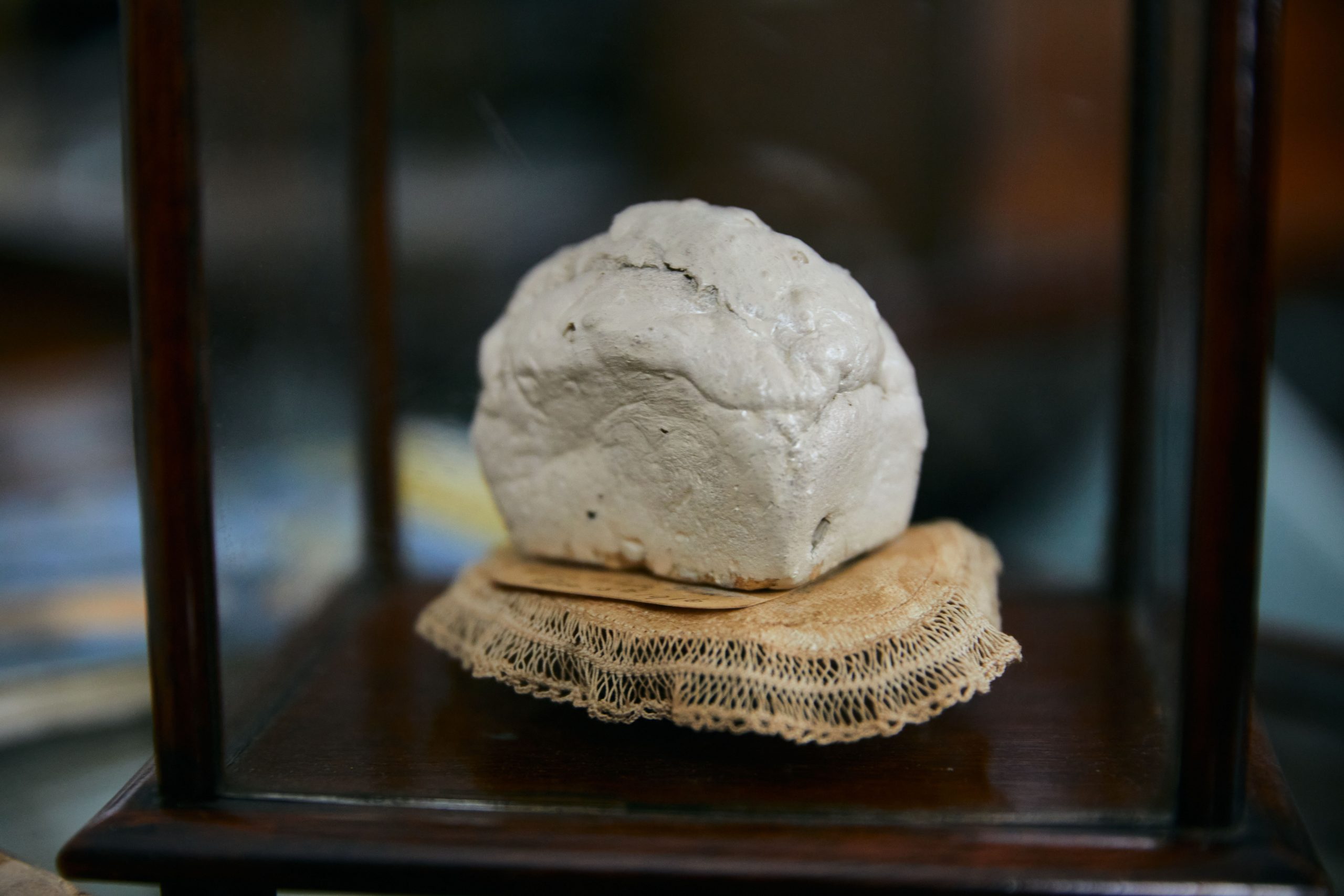
In the Classroom
Role play
Imagine the family who decided to make this loaf. Were they bakers? What made them think it was the last white flour. In groups, take on roles of different family members and discuss what to do with the last loaf of white bread – does everyone in the family agree if should be saved?
Hold a debate
Introduce the debate motion: this loaf was made with the last white flour in 1916. You can read tips for formalising your debate.
Hands on History
You can borrow World War One handling boxes from Beck Isle Museum in Pickering, Scarborough Museums and Galleries and The Dales Countryside Museum, Hawes.
You can take part in a World War One themed creative workshop at Scarborough Art Gallery, exploring the impact of the war on the people of Scarborough.
Museum Location
Explore more objects about the First World War

